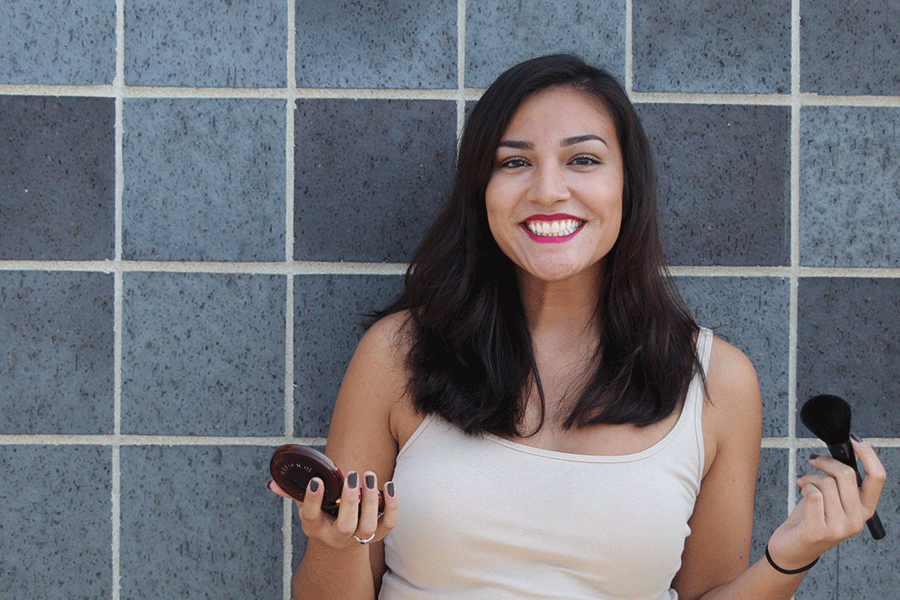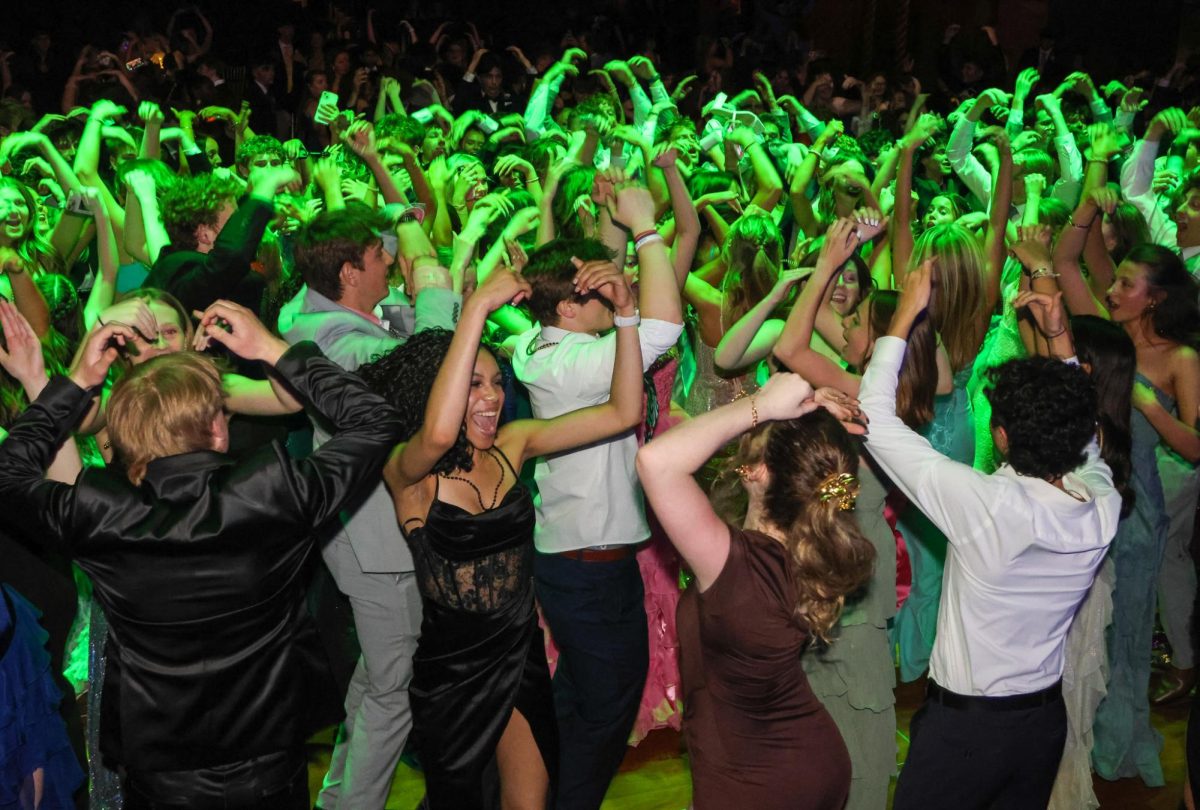Beauty Boss: Everyone is pretty
October 5, 2015
I spent most of second block today mindlessly completing tedious fill-in-the-blank notes and relying on my coffee to keep me alive. We were going over healthy eating habits and malnutrition which segwayed into a PowerPoint about American models who, according to my teacher, are thinner than 98 percent of American women. (Where this statistic was derived, I’m honestly not sure.) On the slide were photos of two bikini models. On the left was a woman closely resembling a traditional runway model: long legs, thin arms and a flat stomach. On the right, a curvy woman looking more like a Kardashian than a stereotypical model.
In the reflection questions section of our notes, we were asked, “Is a very skinny model prettier than a curvy model? Why?” After a few minutes, we raised our hands to share our responses. The teacher asked, “OK, who thinks the model on the left is prettier?” No hands went up. “Who thinks the model on the right is prettier?” Several hands shot up immediately and others sheepishly followed, one by one.
The underclassmen at my table looked at me and sneered at my lack of a response, but I refused to put my hand up for either. They were both pretty enough to become models, for God’s sake, so they were both pretty in their own right.
I was appalled by the judgmental nature of the question. The teacher inadvertently gave the impression that skinny indefinitely equals unhealthy and ugly, while curvy indefinitely equals real and beautiful. Since when does someone’s size gauge how pretty they are? It is 2015. I understand (but do not condone) the fact that there’s this whole unreasonable socially accepted movement where society has gone from putting the petite Paris Hiltons of the world on a pedestal to worshipping the full-figured Beyonces and making everyone else feel inadequate.
Additionally, I totally get the gist of the lesson — to teach us that we should aspire to be healthy and not just skinny. However, it really gave off the idea that being thicker is “real,” better and unquestionably healthier than being skinny.
Wrong. Wrong times a million. Skinny does not necessarily mean “anorexia-stricken bulimic.” Although I could not be happier that fat shaming appears to have become a thing of the past, skinny shaming is just as damaging. Sometimes, someone who’s really skinny just has a speedy metabolism. On the other hand, curvy doesn’t always have to mean healthy. Sometimes an hour glass figure comes from a healthy diet and exercise, which is awesome. Sometimes it comes from genetics, which is also awesome. Moral of the story: you can’t always make accurate judgements about someone’s health just by looking at them. I mean, unless you’re a doctor, in which case you might be good at doing that. It’s still rude though.
Being pretty does not mean being stick thin, it does not mean having the physique of a Kardashian, it doesn’t mean being morbidly obese, it doesn’t mean having a marathon runner’s body and washboard abs and a two-minute mile time. Pretty is not a singular body type because pretty embodies any of those and anything in between. Whether or not your body type is widely represented in the media or not, it is pretty.












Mrs. Gray • Oct 6, 2015 at 11:00 am
Adri~
Thanks for bringing this important conversation into the limelight. Having a healthy self-esteem is important for both women and men when you consider, “1 in 5 women struggle with an eating disorder or disordered eating” (National Institute of Mental Health’s (NIMH) guide, Eating Disorders: Facts About Eating Disorders and the Search for Solutions) and an “estimated 10 to 15% of people with anorexia or bulimia are male” (Carlat, D.J. Camargo. Review of Bulimia in Males. American Journal of Psychiatry, 154, 1997). I feel it is important to take a few minutes from our “mindless tedious notes” to get you to use your mind and reflectively analyze whether you feel that media portrays an unrealistic and unattainable (by many) body type. According to the National Eating Disorder Association “the average woman is 5”4’ and weighs 140 pounds. The average model is 5”11’ and weighs 117 pounds. Most fashion models are thinner than 98% of American women” (Smolak, 1996). While this is an older statistic, it still rings true. Just this last year Sports Illustrated featured its very first plus size model (model featured on power point slide) in a campaign to change the way the fashion industry portrays plus size women. While, I am thrilled that Sports Illustrated supported the plus size industry, we still have a far way to come when this “plus size” model (size 12) is smaller than the average woman (size 14).
By posting the question, “Should fashion models be required to maintain a certain weight to help promote positive body image and health?,” I wanted the class to give their opinion on the subject. As you can imagine and know based off our discussion everyone has a different opinion on what is “beautiful” and “healthy”. I hope someday the media does a better job at portraying a variety of “healthy” body types and not just the body type that only 2% of women can obtain. Then maybe just maybe we won’t have to worry about our loved ones having an unhealthy opinion about what society thinks is beautiful, because like you said, many in S2 nutrition class feel that curvy is beautiful also.
Adri, please, next time I ask to share opinions in class over a subject you feel so passionate about, I encourage you to speak your mind. You should know that I would never judge your opinion, even if it wasn’t the same as mine. That is the great part of having your own opinion and being allowed to share it in class. Imagine how many people you would’ve touched during second block if you told the class your personal feelings about what you feel is beautiful. Everyone needs to hear they are beautiful and maybe you could’ve made someone feel more beautiful if you would’ve said, “Being pretty does not mean being stick thin, it does not mean having the physique of a Kardashian, it doesn’t mean being morbidly obese, it doesn’t mean having a marathon runner’s body and washboard abs and a two-minute mile time. Pretty is not a singular body type because pretty embodies any of those and anything in between. Whether or not your body type is widely represented in the media or not, it is pretty” (Talavera). Thanks for getting my main message during nutrition class, because I would never shame someone for their body type.
Dylan Smith • Oct 6, 2015 at 9:41 am
Next time you write an article that includes direct quotes from me please include citations. Also, having been in the same class also “mindlessly completing tedious fill-in-the-blank notes” we were offered many opportunities to express our opinions on the topics covered during our lesson. Many students in our class chose to take full advantage of these opportunities and communicate directly with the teacher about how they felt. One of these students was myself, I did not realize that my thoughts and opinions would later unconsentually appear in a “MVnews.org” article, but that is alright as any opinion I stated during the lesson I would be willing to share with all of Mill Valley. Now on the other hand we have students that are unwilling to express how they feel face to face. These students prefer to bad mouth their teacher on the “web” in partially plagerized articles. In class our teacher provided us with unbiased information and allowed us to develop our own opinions about the information presented. I do understand that you chose not to use our teachers name to avoid negative backlash which is somewhat clever from a business standpoint but there are only so many 2nd block nutrition teachers at Mill Valley so to many it is quite obvious who you are writing about. In a study conducted by John J. Drussel at St. Catherine University it was found that “the use of technology for conflict resolution is not an effective form of communication and may lead to a lack of development in conflict resolution skills” the study also found that “the lack of conflict resolution skills may lead to the use of human services and involvement in the legal system, requiring the need to access limited financial resources, and also the risk of out of home placement.” (Link to study: Sophia.stkate.edu/cgi/viewcontent.cgi?article=1021&context=msw_papers)
You writing this article has helped to uncover the true culprit which is the inability for our generations teens to communicate effectively in person. Whether this problem is caused by a lack of self esteem, never having been taught how to effectively communicate, or in this case a possible fear of authority, I do not know, but I hope that this comment will help to uncover some potential problems in your communications skills that you will be able to address and if all goes well one day you may be able to write an article about titeled “How I Became An Effective Communicator”
You may be asking why I am choosing to leave this comment on the Internet when I am clearly against using technology to solve issues with others and the reason I have chosen to type out this response is that I believe that while face to face communication is superior to communication over the internet I understand that to be successful in a technologically driven world you must be able to effectively communicate both in person and on the web. Also I plan on addressing this article in our next nutrition class where I would be happy to hear (and hopefully understand) your thought process while deciding to write this article!
Jodi Ellis • Oct 6, 2015 at 2:36 pm
Very well spoken Dylan, good for you for taking the time to respond in such length! I for one am proud of you!
Val merriman • Oct 6, 2015 at 8:30 am
I believe that I am in the same class that you are referring to only not the same block, I’m sorry but I do not agree that the teacher was acting this way at all, at least not in my class. She did a great job of being fair towards both sides.
Ethan • Oct 6, 2015 at 8:29 am
This isn’t true at all to be honest